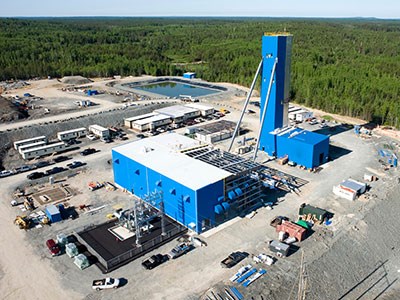Tahoe Resources is calling its new Timmins-area assets a “critical component” in growing the company following its acquisition of Lake Shore Gold.
The company announced the merger between Tahoe and Lake Shore Gold had been completed on April 1.
Tahoe’s new 2016 guidance includes total gold production of between 370,000 and 430,000 ounces of gold. By 2020, the company wants to be producing 550,000 ounce of gold annually.
“Our new Lake Shore Gold Division is a critical component of our value creation plans,” Tahoe CEO Kevin MacArthur said in a release. “Specifically, our strategy includes growing gold production in Timmins by approximately 40 per cent, to over 250,000 ounces per year by 2020.”
To achieve this, the company will recommission and extend the shaft at the Bell Creek Mine to depth, which the company estimates could more than double production at that operation.
The company will also continue to advance the Whitney Project, which MacArthur said could begin as an open pit and then transition to underground mining.
Tahoe also wants to achieve commercial production at the 144 Gap deposit in 2017.
“We are also contemplating a further expansion of the Bell Creek Mill to 5,500 tonnes per day, with the crushing and grinding circuit already commissioned for this level of performance,” MacArthur added.
The company wants to increase mine life for its Canadian operations by adding ounces at Timmins West and Bell Creek mines and advancing exploration at its Whitney deposit along the 144 Trend.
“With three gold deposits identified along the 144 Trend to date — Timmins Deposit, Thunder Creek and the 144 Gap Deposit — another discovery to be advanced and multiple additional targets, we believe that 144 has ‘tip of the iceberg’ potential and could become a major gold producer in the tradition of the large-scale, long-life historic producers in the Timmins Camp,” MacArthur said.
The company will also look at the longer-term potential of the Gold River, Fenn-Gib and Juby projects.
Following the merger, Alan Moon, former chair at Lake Shore, has joined Tahoe’s board of directors. Tony Makuch, Lake Shore’s former president and CEO, now becomes Tahoe’s executive vice-president and president of Canadian Operations.
In addition to its Northern Ontario operations, Tahoe Resources owns and operates the Escobal Silver Mine in Guatemala, the world’s third largest silver producer; the La Arena open-pit gold mine, located in Peru, for which a feasibility study is currently being developed; and the Shahuindo open-pit gold mine, also located in Peru, which is expected to reach commercial production in 2016.




